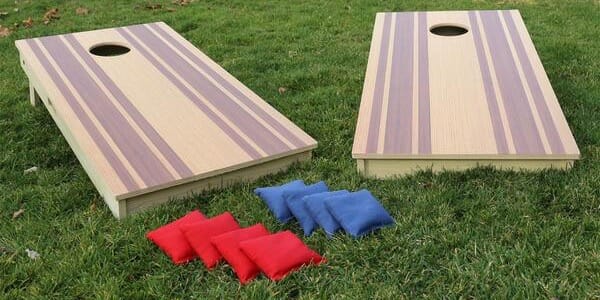Cornhole, the quintessential backyard game, has taken social gatherings and tailgate parties by storm. Its simplicity and the thrill of competition make it a favorite pastime for people of all ages. If you’re curious about the origins, recommended cornhole board sizes, rules, strategies, and why this game has become a craze, this article comprehensively explains this beloved outdoor activity.
A Brief History
Cornhole, also known as bean bag toss, has a surprisingly rich history. Its origins can be traced back to ancient civilizations, but the modern version we know today gained popularity in the Midwest, particularly in Cincinnati, Ohio, during the 1970s. Originally a favorite pastime at tailgate parties and family gatherings, cornhole quickly spread across the United States, becoming a staple at backyard barbecues and social events.
Game Setup and Equipment
Cornhole is played with two inclined cornhole boards placed a certain distance apart. Each board has a hole near the top. Players or teams alternate tossing bean bags filled with beans or corn kernels at the opposite board, aiming to land the bags on the board or, ideally, through the hole. The game can be enjoyed in various settings, from grassy lawns to sandy beaches, making it adaptable to different environments.
Scoring and Rules
Cornhole scoring is straightforward. A bag on the board earns one point, while a bag through the hole earns three points. The game is typically played to a predetermined number of points, often 21.
A player or team must reach or exceed the designated score while leading by at least two points to win. Cornhole rules are flexible, allowing for friendly variations, but maintaining consistency in distance, cornhole board angle, and bag weight is crucial for fair play.
Cornhole Strategy
While cornhole is a game of skill and precision, it also involves strategic decision-making. Players must consider factors such as the wind’s direction and strength, their opponents’ skills, and the placement of their bags on the board.
Advanced players develop techniques like the slide shot and the airmail to outmaneuver opponents and score points. Understanding the strategic aspects of the game adds depth to the fun and excitement of cornhole matches.
Cornhole Tournaments and Competitions
The popularity of cornhole has led to the emergence of professional tournaments and competitions. Organizations like the American Cornhole League (ACL) host events that attract skilled players worldwide.
These tournaments offer substantial cash prizes and showcase the competitive side of this seemingly simple game. Participating in or watching these events can provide insights into advanced techniques and strategies employed by top players.
The Social Aspect of Cornhole
Beyond its competitive aspect, cornhole is a social game that fosters connections and friendship. Whether played at family gatherings, neighborhood picnics, or local tournaments, cornhole brings people together. The friendly banter, cheers, and high-fives between players create a vibrant and inclusive atmosphere.
Summary
The cornhole craze is a reflection of the game’s timeless appeal. Its blend of simplicity, strategy, and sociability has endeared it to millions, transforming it from a backyard pastime into a cultural marvel.
So, the next time you pick up a bean bag and aim for that elusive hole, remember that you’re part of a craze that spans generations and brings joy to countless gatherings. Cornhole isn’t just a game; it’s a shared experience that creates lasting memories.
HussaiN is a full-time professional blogger from India. He is passionate about content writing, tech enthusiasts, and computer technologies. Apart from content writing on the internet, he likes reading various tech magazines and several other blogs on the internet. Email ID: [email protected]
